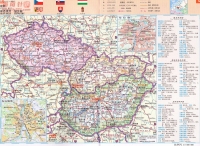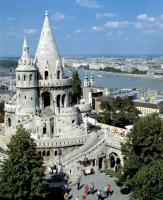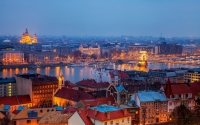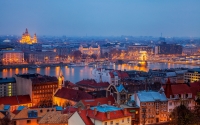|
英国 United Kingdom 爱尔兰 Ireland 比利时 Belgium 荷兰 Netherlands 法国 France 西班牙 Spain 葡萄牙 Portugal 意大利 Italy 希腊 Greece 奥地利 Austria 匈牙利 Hungary 德国 Germany 瑞士 Switzerland 罗马尼亚 Romania 俄罗斯 Russia 波兰 Poland 克罗地亚 Croatia (Hrvatska) 捷克 Czech 芬兰 Finland 瑞典 Sweden 挪威 Norway 冰岛 Iceland 土耳其 Turkey 丹麦 Denmark 阿尔巴尼亚 Albania 爱沙尼亚 Republic of Estonia 安道尔 Andorra 白俄罗斯 Belarus 保加利亚 The Republic of Bulgaria 波斯尼亚和黑塞哥维那 Bosnia and Herzegovina 梵蒂冈 Vatican City State (Holy See) 黑山 The Republic of Montenegro 拉脱维亚 Latvia 立陶宛 Republic of Lithuania 列支敦士登 Liechtenstein 卢森堡 Luxembourg 马耳他 Republic of Malta 马其顿 The Republic of Macedonia 摩尔多瓦 The Republic of Moldova 摩纳哥 Monaco 塞尔维亚 the Republic of Serbia 斯洛伐克 The Slovak Republic 斯洛文尼亚 the Republic of Slovenia 圣马力诺 San Marino 乌克兰 Ukraine |
| xiōng yá lì Hungary shǒudōu:bù dá pèi sī guógūdàimǎ: hu |
|
guó míng guó míng shì yì yǐ mín zú míng chēng mìng míng。 yī bān rèn wéi guó qí chéng cháng fāng xíng, cháng yǔ kuān zhī bǐ wéi 3 ∶ 2。 zì shàng 'ér xià yóu hóng、 bái、 lǜ sān gè píng xíng xiāng děng de héng cháng fāng xíng xiāng lián 'ér chéng。 hóng sè xiàng zhēng 'ài guó zhě de rè xuè, hái xiàng zhēng guó jiā de dú lì hé zhù quán; bái sè xiàng zhēng hé píng, dài biǎo rén mín zhuī qiú zì yóu hé guāng míng de měi hǎo yuàn wàng; lǜ sè xiàng zhēng zhe guó huī wéi dùn huī。 dùn miàn chuí zhí fēn wéi liǎng bù fēn: zuǒ biān wéi píng xíng、 hóng bái xiāngjiàn de kuān tiáo; yòu biān xià fāng shì lǜ sè de shān fēng, fēng dǐng shàng yòu yī dǐng wáng guān, wáng guān shàng miàn shì bái sè shuāng shí zì tú 'àn, zhè shì zhù jiào biāo zhì。 dùn huī shàng miàn shì yī gè shèng sī tí fēn dà wáng guān, wáng guān zhī shàng yòu yī qīng xié de shí zì jià, chuán shuō shí zì jià shì wáng guān bèi qiè shí ràng xiǎo tōu yā xié de。 guó gē《 dú lì rì 11 yuè 16 rì( 1918 nián) guó qìng rì 8 yuè 20 rì( 1949 nián) dà tú shā jì niàn rì: 4 yuè 1 6 rì(1 944 nián) zhēng qǔ zì yóu dǒu zhēng rì:3 yuè1 5 rì(1 848 nián) mín zú mǎ zhā 'ěr zú zhàn zǒng rén kǒu de 98 %, qí tā yòu rì 'ěr màn zú、 sī luò fá kè zú、 luó mǎ ní yà zú、 sài 'ěr wéi yà zú děng。 yòu yī shuō fǎ shì zhōng guó gǔ dài de xiōng nú。 ( yòu shī zhèng míng: wǒ men nà yáo yuǎn de zǔ xiān, nǐ men shì zěn me cóng yà zhōu zǒu guò màn cháng de dào lù, lái dào duō nǎo hé biān jiàn lì qǐ guó jiā de? --------- shǒu dū bù dá pèi sī (Budapest)。 rén kǒu1 7 0 wàn(2006 nián1 yuè1 rì)。 zhù yào chéng shì mǐ shí kē 'ěr cí、 dé bù lè sēn、 sài gé dé。 huò bì fú lín。 tóng běi jīng shí chā -7.00 guó jì diàn huà mǎ 36 guó huā yù jīn xiāng héng héng( bǎi hé kē) míng shèng bā lā dùn hú、 bā lā dé lā dòng qún、 shèng · yī sī tè wàn dà jiào táng。 fēng sú fù nǚ hūn hòu, biàn yòng huā bù bǎ tóu fā bāo zhù, zhè shì yǔ wèi hūn shàonǚ de zuì dà qū bié。 jié hūn xū jīng qiú hūn、 dìng hūn hé yíng qǔ sān gè jiē duàn, dìng hūn de yí shì bì bù kě shǎo, shuāng fāng dū yóu yī wèi nǚ xìng qīn qī péi tóng qù shén fù chù dēng jì。 guó jiā zhèng yào: zǒng tǒng shào yuē mǔ · lā sī luò (SolyomLaszlo),2005 nián6 yuè dāng xuǎn; zǒng lǐ jiǔ 'ěr qià ní · fèi lún cí( GyurcsanyFerenc),2004 nián9 yuè dāng xuǎn,2006 nián4 yuè, shè huì dǎng zài guó huì dà xuǎn zhōng huò shèng, yíng dé zǔ gé quán, tóng nián6 yuè, jiǔ 'ěr qià ní xuān shì jiù rèn zǒng lǐ。 rén kǒu 1006 wàn(2007 nián1 yuè1 rì)。 zhù yào mín zú wéi mǎ zhā 'ěr zú( jí zì rán dì lǐ miàn jī wéi 93030 píng fāng gōng lǐ。 shì wèi yú 'ōu zhōu zhōng bù de nèi lù guó jiā, quán jìng yǐ píng yuán wéi zhù, 80% de guó tǔ hǎi bá bù zú 200 mǐ, shǔ duō nǎo hé zhōng yóu píng yuán。 duō nǎo hé yǐ dōng de shān qū sēn lín mào mì, yòu lì shù、 shān máo jǔ、 duàn shù děng; píng yuán yòu dà piàn cǎo yuán, fā yù yòu féi wò de hēi tǔ。 zhòng yào hé liú wéi duō nǎo hé jí qí zhī liú dì sà hé。 bā lā dùn hú wéi zuì dà dàn shuǐ hú。 shǔ wēn dài dà lù xìng qì hòu, píng jūn qì wēn 1 yuè -4 ~ -2 ℃, 7 yuè 20~ 22℃, nián jiàng shuǐ liàng 480~ 800 háo mǐ, zì xī xiàng dōng dì jiǎn。 dōng lín luó mǎ ní yà, nán jiē sài 'ěr wéi yà, xī yǔ 'ào dì lì jiē rǎng, běi yǔ jié kè、 sī luò fá kè、 wū kè lán wéi lín。 lǚ tǔ kuàng chǔ liàng fēng fù, fēn bù zài wài duō nǎo shān dì yī dài; hái yòu méi、 shí yóu、 tiān rán qì、 tiě、 měng、 yóu děng kuàng cáng。 quán jìng sān fēn zhī 'èr dì qū yòu dì xià rè shuǐ yùn cáng。 jiǎn shǐ zhèng zhì 1989 nián jīng jì zì rán zī yuán bǐ jiào pín fá, zhù yào kuàng chǎn zī yuán shì lǚ fán tǔ, qí yùn cáng liàng jū 'ōu zhōu dì sān wèi。 cǐ wài yòu shǎo liàng hè méi、 shí yóu、 tiān rán qì、 yóu、 tiě、 měng děng。 sēn lín fù gài shuài yuē wéi18%。 nóng yè jī chǔ jiào hǎo, zài guó mín jīng jì zhōng zhàn zhòng yào dì wèi, bù jǐn wèiguó nèi shì chǎng tí gōng fēng fù de shí pǐn, ér qiě wèiguó jiā zhèng qǔ dà liàng wài huì。 zhù yào nóng chǎn pǐn yòu xiǎo mài、 yù mǐ、 tián cài、 mǎ líng shǔ děng。 lǚ yóu yè bǐ jiào fā dá。 1989 nián yǐ lái, jiǔ shí nián dài zhōng qī, xiōng dà dāo kuò fǔ dì tuī xíng liǎo yī tào jīng jì gǎi gé jìhuà, jí zài shì chǎng jīng jì de jī chǔ shàng shí shī sī yòu huà hé jīng jì zì yóu huà de zhèng cè, dà lì xī yǐn wài guó tóu zī。 gǎi gé qǔ dé liǎo míng xiǎn de chéng xiào, xiōng shī yè shuài zhú nián xià jiàng, tōng huò péng zhàng dà fú dù jiàng dī, wài guó tóu zī bù duàn yǒng rù, xiōng hěn kuài dì zǒu shàng liǎo yǐ chū kǒu dài dòng jīng jì kuài sù zēngzhǎng de dào lù, jìn 2000 jiā guó yíng qǐ yè zài sī yòu huà guò chéng zhōng bèi chū shòu, sī yíng jīng jì zhàn guó nèi shēng chǎn zǒng zhí de bǐ lì yóu 1989 nián de 20% zēng zhì 2000 nián de 80% yǐ shàng。 1997 héng 2000 nián, xiōng jīng jì píng jūn zēngchánglǜ chāo guò liǎo 4%。 2001 nián, jìn guǎn qí guó nèi shēng chǎn zǒng zhí de zēng fú fàng màn, dàn réng rán shì zhōng dōng 'ōu dì qū zēngchánglǜ zuì gāo de guó jiā zhī yī, qiě gāo yú 'ōu méng de píng jūn zēngzhǎng shuǐ píng。 zài guò qù jiào cháng yī duàn shí qī, 2002 nián mù dí tóu zī fú wù gōng sī jiāng 【 gōng yè】 xiōng 2000 nián gōng yè shēng chǎn zēngchánglǜ wéi 18.3%, ér 2001 nián jiàng zhì 4.1%,2002 nián gèng jiàng zhì 2.6%. xiōng gōng yè shēng chǎn zēngzhǎng zhù yào lái zì yú xìn xī jì shù、 diàn xùn hé jiā diàn děng bù mén de fā zhǎn。 【 jī chǔ shè shī】 【 láo dòng lì】 2001 nián 【 wài guó tóu zī shì zài sī yòu huà fāng shì shàng, zì 1990 nián yǐ lái, xiōng gòng yòu 1500 duō jiā guó yòu qǐ yè shí xiàn liǎo sī yòu huà, sī yòu huà shōu rù chāo guò 100 yì měi yuán。 zì 1995 nián 6 yuè《 sī yòu huà fǎ 'àn》 jí qí xiū zhèng 'àn bān bù yǐ lái, sī yòu huà jìn chéng míng xiǎn jiā kuài, qí chéng xù yě gèng jiā tòu míng。 zì 1990 nián yǐ lái, wài guó tóu zī zhě zài xiōng tóu zī chuàng bàn liǎo yuē 30000 jiā qǐ yè, tóu zī 'é yuē wéi 284 yì měi yuán, yuē zhàn zhōng dōng 'ōu dì qū xī yǐn wài zī de sān fēn zhī yī, zài wài zī chǎn zhí yuē zhàn guó nèi shēng chǎn zǒng zhí de sān fēn zhī yī, gù yòng liǎo quán guó 43% de láo dòng lì, qí chū kǒu 'é zhàn quán bù chū kǒu de 70%。 wài zī qǐ yè duì tí gāo wài guó tóu zī de chǎn yè jié gòu zhèng fā shēng biàn huà: zhì zào yè de bǐ lì cóng 2001 nián de 50% xià jiàng zhì 2002 nián de 36%, ér zài fáng dì chǎn、 zū lìn、 fǔ zhù shāng yè huó dòng( 16%)、 jīn róng fú wù yè( 12%)、 diàn lì hé tiān rán qì、 gōng nuǎnhuo gōng shuǐ( 9%) děng lǐng yù tóu zī bǐ lì dōuyòu xiǎn zhù de tí gāo . mù qián shì jiè shàng zuì dà de 50 jiā kuà guó gōng sī zhōng yǐ yòu 45 jiā jìn zhù yuè lái yuè duō de wài zī qǐ yè jiāng zhù yì lì jí zhōng zài gāo fù jiā zhí、 gāo pǐn zhì de chǎn pǐn zhōng。 hěn duō gōng sī rú tōng yòng diàn qì、 tōng yòng qì chē、 ōu bǎo、 nuò jī yà、 ào dí、 xī mén zǐ、 Flextronics、 fěi lì pǔ、 ài lì xìn děng qǐ yè yǐ jīng qiān wǎng yóu yú zài guò qù de jǐ nián zhōng, xiōng zhèng fǔ zhòng diǎn gǔ lì fā zhǎn yǐ xià hángyè: zhù fáng、 qiáo liáng hé gāo sù gōng lù jiàn shè、 zhōng xiǎo qǐ yè de fā zhǎn、 lǚ yóu、 chuàng xīn hé yán fā( tè bié shì zài xìn xī kē jì lǐng yù)。 【 90 nián dài zhōng qī, suí zhe wài guó tóu zī de dà liàng yǒng rù, yǔ guò qù xiāng bǐ, 2002 nián, xīn wén chū bǎn mù qián zài xiōng bàn bào wú xū pī zhǔn, dào wén jiào bù dēng jì jí kě。 bù shǎo kān wù yòu wài guó gǔ fèn。2001 nián fā xíng liàng jiào dà de quán guó xìng bào zhǐ yòu7 zhǒng, qí tā kān wù87 zhǒng。 zhù yào rì bào yòu《 dì tiě bào》、《 jīn rì yī piē》、《 rén mín zì yóu bào》、《 mín zú tǐ yù bào》、《 wài jiāo fèng xíng dú lì de、 yǐ mín zú lì yì wéi jī chǔ de duì wài zhèng cè。 zài wéi hù dōng xī fāng píng héng de wài jiāo guān xì de tóng shí, zhēng qǔ fǎn huí 'ōu zhōu, zǎo rì jiā rù 'ōu méng。1999 nián3 yuè, yǔ zhōng guó guān xì 1949 nián 10 yuè 6 rì, Names In the late middle age, the Latin terms "Natio Hungarica" and "Hungarus" referred to all noblemen of the Kingdom. A Hungarus-consciousness (loyalty and patriotism above ethnic origins) existed among all inhabitants of this state. However, according to István Werbőczy's Tripartitum, the "Natio Hungarica" were only the privileged noblemen, subjects of the Holy Crown of Hungary regardless of ethnicity. The Latin name Regnum Hungariae/Vngarie (Regnum meaning kingdom); Regnum Marianum (The Kingdom or Reign of St. Mary); or simply Hungaria was the form used in official documents from the beginning of the kingdom to the 1840s, the German name (Königreich Ungarn) from 1849 to the 1860s and the Hungarian name (Magyar Királyság) in the 1840s and from the 1860's to 1918. The names in other languages of the kingdom were: (Hungarian: Magyar Királyság, Polish: Królestwo Węgier, Romanian: Regatul Ungariei, Serbo-Croatian: Краљевина Угарска/Kraljevina Ugarska, Slovene: Kraljevina Ogrska, Czech: Uherské království, Slovak: Uhorské kráľovstvo. History of the Kingdom of Hungary Medieval Hungary controlled more territory than medieval France (with only the Holy Roman Empire being larger than Hungary), and the population was the third largest of any country in Europe. The Kingdom of Hungary arose in present-day western Hungary and present-day western Slovakia, and subsequently spread to remaining present-day Hungary, to Transylvania (in present-day Romania), present-day eastern Slovakia, Carpatho-Ruthenia, Vojvodina (in present-day Serbia) and other smaller nearby territories. It existed in personal union with the Kingdom of Croatia from 1102 until 1918 under the name Lands of the Crown of St. Stephen. The Hungarian Holy Crown of Saint Stephen.The first kings of the Kingdom were from the Árpád dynasty. In the early 14th century, this dynasty was replaced by the Angevins, and later the Jagiellonians as well as several non-dynastic rulers, notably Sigismund, Holy Roman Emperor and Matthias Corvinus. At the Battle of Mohács in 1526, the Hungarian army was defeated by the forces of the Ottoman Empire, and Louis II of Hungary ran away and drowned in the Csele Creek. Under the Ottoman attacks the central authority collapsed and a struggle for power broke out. The majority of Hungary's ruling elite elected John Zápolya (10 November 1526). A small minority of aristocrats sided with Ferdinand I, Holy Roman Emperor who was Archduke of Austria and was related to Louis's family by marriage, as King of Hungary; there had been previous agreements that the Habsburgs would take the Hungarian throne if Louis died without heirs, as he did. Ferdinand was elected king by a rump diet in December 1526. On 29 February 1528, King John I of Hungary received the support of the Ottoman Sultan. A three-sided conflict ensued as Ferdinand moved to assert his rule over as much of the Hungarian kingdom as he could. By 1529 the kingdom had been split into two parts: Habsburg Hungary and "eastern-Kingdom of Hungary". At this time there were no Ottomans on Hungarian territories, except Srem's important castles. By 1541, the fall of Buda marked a further division of Hungary, in three parts and remained so until the end of the 17th century. Although the borders were changing very frequently during this period, the three parts can be identified more or less as follows: Present-day Slovakia, north-western Transdanubia, Burgenland, western Croatia, and adjacent territories were under Habsburg rule. This area was referred to as Royal Hungary, and though it nominally remained a separate state, it was administered more or less as part of the Habsburgs' Austrian holdings, to which it was immediately adjacent. This was the continuation of the Kingdom of Hungary. Map of the counties in the Lands of the Crown of St. Stephen (the Kingdom of Hungary proper and Croatia-Slavonia) around 1880The Great Alföld (i.e. most of present-day Hungary, incl. south-eastern Transdanubia and the Banat), partly without north-eastern present-day Hungary, became part of the Ottoman Empire (see Ottoman Hungary). The remaining territory became the newly independent principality of Transylvania, under Zápolya's family. Transylvania was a vassal state of the Ottoman Empire. After a failed Ottoman invasion of Austria in 1683, the Habsburgs went on the offensive against the Turks; by the end of the 17th century, they had managed to conquer the remainder of the historical Kingdom of Hungary and the principality of Transylvania. At this point, the Royal Hungary terminology was dropped, and the area was once again referred to as the Kingdom of Hungary, although it was still administered as a part of the Habsburg realm. In the 18th century, the Kingdom of Hungary had its own Diet (parliament) and constitution, but the members of the Governor's Council (Helytartótanács, the office of the palatine) were appointed by the Habsburg monarch, and the superior economic institution, the Hungarian Chamber, was directly subordinated to the Court Chamber in Vienna. The official language of the Kingdom of Hungary remained Latin until 1844; it was Hungarian between 1844 and 1849 then from 1867. Austria-Hungary The coat of arms of the Kingdom of HungaryFollowing the Austro-Hungarian Compromise of 1867, the Habsburg Empire became the "dual monarchy" of Austria-Hungary. The Austro-Hungarian economy changed dramatically during the existence of the Dual Monarchy. Technological change accelerated industrialization and urbanization. The capitalist way of production spread throughout the Empire during its fifty-year existence. The obsolete medieval institutions continued to disappear. By the early 20th century most of the Empire had started to experience rapid economic growth. The GNP per capita grew roughly 1.45% per year from 1870 to 1913. That level of growth compared very favorably to that of other European nations such as Britain (1.00%), France (1.06%), and Germany (1.51%). The historic lands of the Hungarian Crown (the Kingdom of Hungary proper, to which Transylvania was soon incorporated, and Croatia-Slavonia, which maintained a distinct identity and a certain internal autonomy) was granted equal status with the rest of the Habsburg monarchy; the two states comprising Austria-Hungary each had considerable independence, with certain institutions and matters (notably the reigning house, defence, foreign affairs, and finances for common expenditures) remaining joint. This arrangement was to last until 1918, when 72% of the territory of the Kingdom of Hungary was divided between neighbouring states of Austria/Romania and newly formed states of Czechoslovakia/Kingdom of Serbs, Croats and Slovenes as the Central Powers went down in defeat in World War I. The new borders were set in 1920 by the Treaty of Trianon leaving more than 3,5 million ethnic Hungarians outside the new borders that were originally meant to accord ethnic borders. Kingdom of Hungary between 1920-1944 After the pullout of occupation forces of Romania in 1920 from its war against the Communist regime of Béla Kun, the country went into civil conflict, with Hungarian anti-communists and monarchists purging the nation of communists, leftists and others they felt threatened by. Later in 1920, a coalition of right-wing political forces united and returned Hungary to being a constitutional monarchy. Selection of the new King was delayed due to civil infighting, and a regent was appointed to represent the monarchy. Former Austro-Hungarian navy admiral Miklós Horthy became that regent. The Kingdom of Hungary existing from 1920 to 1944 was a de facto regency state under Regent Miklós Horthy officially representing the abdicated Hungarian monarchy. Attempts by Charles IV King of Hungary to return to the throne were prevented by threats of war from neighbouring countries, and by lack of support from Horthy (see Charles IV of Hungary's conflict with Miklós Horthy). The first ten years of the reinstated kingdom saw increased repression of Hungarian minorities. Limits on the number of Jews permitted to go to university were placed, corporal punishment was legalized. Under the leadership of Prime Minister István Bethlen, democracy dissipated as Bethlen manipulated elections in rural areas which allowed his political party, the Party of Unity to win repeated elections. Bethlen pushed for the revision of the Treaty of Trianon. After the collapse of the Hungarian economy from 1929 to 1931, national turmoil pushed Bethlen to resign. This state was conceived of as a "kingdom without a king," since there was no consensus on either who should take the throne of Hungary, or what form of government should replace the monarchy. The Kingdom of Hungary was one of the Axis powers during World War II until its defection in 1944, in which the state was occupied and dissolved by Nazi Germany and replaced by a briefly-existing puppet state. Historical perceptions In today's Hungary, the Kingdom of Hungary is regarded as one long stage in the development of the same state. This sense of continuity is reflected in the republic's national symbols, holidays, official language and the capital city of the country. The short form of the name is the same in Hungarian (Magyarország). The millennium of the Hungarian statehood was commemorated in 2000 and codified by the Millennium Act of 2000. In contrast, scholars outside Hungary observe that the Kingdom of Hungary, being a multiethnic and later multinational state, "bore little resemblance, in territory or population, to today’s Hungary". This observation is reflected also by the fact that the Croatian, Serbian, Slovak and Slovenian languages (groups formerly within Hungary) have different names for the Kingdom of Hungary and modern Hungary. |
|
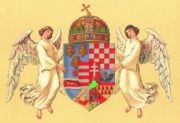
![匈牙利小姐評選揭曉[圖] 5月22日,在匈牙利首都
diǎnjītúpiànchákànxiángqíng](http://oson.ca/upload/images11/cache/99f9b3f79a958535f05f3c91a76c8b5e.jpg)
